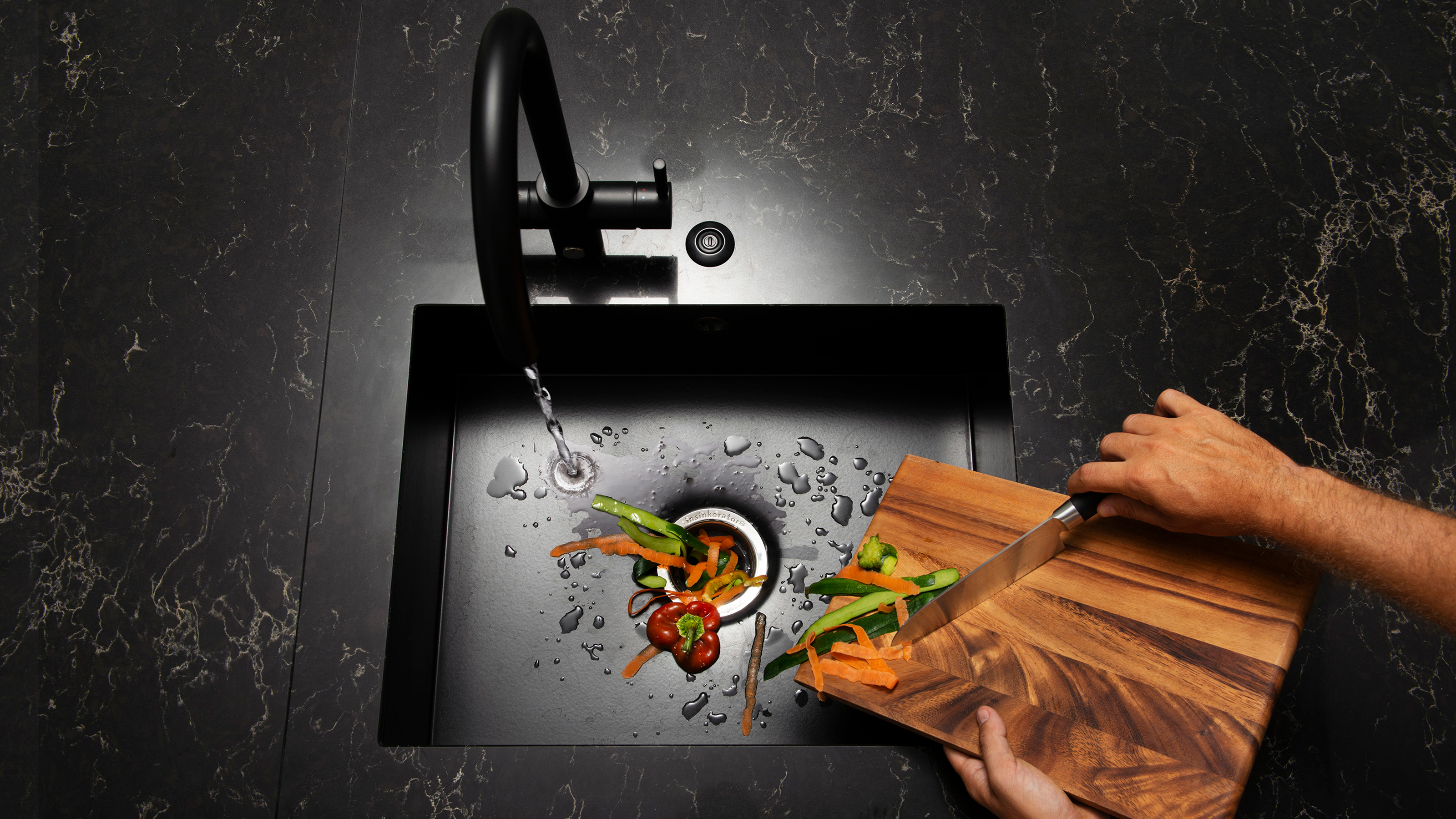How to replace a garbage disposal
Everything you need to know plus, step-by-step instructions on how to replace a garbage disposal yourself like a pro


Replacing a garbage disposal is a job most homeowners can handle themselves.
With just a few hand tools and a short tutorial, George Medina, plumbing instructor at National Technical Institute in Pheonix, Arizona, says it’s 'not an easy job, but not difficult either.' So, if you’re ready to tackle this moderately skilled DIY project, we have everything you need to know about the process. From the required tools and step-by-step instructions to tips from a pro, we arm you with the knowledge to get this job checked off your to-do list.
Different types of garbage disposal
There are lots of garbage disposal fixes you can tackle yourself but, if yours is beyond repair, or if you just want an upgraded model, here are the main differences you’ll find in this popular kitchen appliance.
- Power: Disposals come in different horsepower ratings. From ⅓ to 1 or more horsepower, how forceful of an appliance you need depends on the size of your household. The smaller the family, the fewer horsepower you’ll require.
- Type: Disposals are either batch feed or continuous feed. A batch-feed disposal will only run when you insert a stopper into the drain and then turn on the switch. They are a good choice for homes with small children. A continuous-feed disposal doesn’t require a stopper. Instead, a simple flip of a switch activates it.
- Wiring: Some brands of disposals are hardwired to plug into an outlet. Others, you’ll need to connect the wires yourself. If you purchase a model unlike your previous one, you can adapt it.
Supplies you'll need
The tools and supplies you’ll need to replace your garbage disposal may vary, depending on the brand you purchase. But these items are pretty standard for this job.
- Flat-head screwdriver
- Philips screwdriver
- Large adjustable wrench
- Plumber’s putty
- Two wire nuts
- Small basin to catch drips
Important parts of a garbage disposal
Before taking things apart, it helps to know what’s what on your device. Locate these essential parts on your model:
- Mounting rings
- Snap ring
- Dishwasher inlet tube
- Discharge tube
- Power supply
How to remove a garbage disposal
Step 1
Turn off the power to the disposal at the breaker box. If your unit is hardwired, simply unplug it from the wall.
Step 2
Place a small basin underneath the work area to catch water when disconnecting pipes. Disconnect the drain trap from the discharge tube. Also, disconnect the tubing from the dishwasher inlet.
Get small space home decor ideas, celeb inspiration, DIY tips and more, straight to your inbox!
Step 3
Follow these steps to release the disposal from the mounting ring found towards the top of the unit.
Step 4
If your disposal is wired directly, remove the cover plate and disconnect the wires.
How to install a new garbage disposal
Step 1
Once you’ve removed the old disposal, remove the mounting assembly from the new disposal. Most manufacturers ship everything assembled, making it necessary for you to disassemble the parts before installing them. First, determine if the disposal will fit on the old mounting assembly. If not, remove the old mounting assembly from your sink and install the new one by following the instructions below.
Step 2
If attaching a dishwasher, use a screwdriver to knock out the plug in the dishwasher inlet tube.
Step 3
If not hardwired, remove the electrical cover plate, pull out the wires, and connect the disposal to the power supply. Connect white to white and black to black or red using wire nuts. Then connect the green wire to the grounding screw on the disposal. Push the wires back into the disposal and replace the cover plate.
If your unit is hardwired, simply plug it into the outlet under your sink. If your old unit was hardwired, but your new disposal came without an electrical cord, you can purchase and attach a cord kit.
Step 4
Attach the discharge pipe to the disposal using the clamp provided.
Step 5
Attach the disposal to the mounting assembly by lifting it while aligning the mounting tabs with the slide ramps. Next, turn it so that the tabs ride up those ramps to hold it in place. Then, turn the mounting tabs until the disposal locks into place.
Step 6
Reattach the drain trap to the discharge tube. Also, if needed, attach the dishwasher drain to its inlet tube.
Step 7
Turn the power back on, if needed. Then, fill the sink with water and look for leaks.
How to replace the mounting assembly
If your new garbage disposal doesn’t fit on the existing mounting assembly, you’ll need to remove it and replace it with the one supplied with the new unit. No worries, it’s just an extra step, but just as straightforward.
1. Begin by using a screwdriver to pry off the snap ring holding the old mounting assembly under the sink. Then use a screwdriver to loosen and remove the screws holding everything to the sink flange. Pull it down, along with any gaskets or backup rings. Next, from above, pry the flange from the sink’s hole and remove any existing plumber’s putty, old gaskets, or debris to create a clean surface for the new application.
2. To install the new mounting assembly, apply a generous ring of plumber’s putty around the flange and, from the top, press it into place in the sink’s drain hole. Then from below, insert the gasket over the flange, the second flange if one was provided, and then the mounting ring. Finally, hold all these items in place while inserting the snap ring.
3. Finally, with someone holding the flange down in the sink or with something heavy resting on it, tighten the screws on the mounting ring firmly and evenly around the flange. Once all is tight, remove any excess plumbers putty from around the drain hole in your sink.
Pro installation tips
- While most garbage disposals install the same, you may encounter slight variations by brand. Therefore, it always helps to read the manufacturer’s instructions before beginning.
- If you’re installing a garbage disposal larger than your previous model, you may need to trim the discharge pipe with a hacksaw to be able to align everything up with the existing drain trap.
- If the electrical outlet under the sink is corroded or in poor condition, consider having an electrician replace it.
Carol J. Alexander writes website copy, blog posts, and feature articles on home remodeling and construction topics from her home in the Shenandoah Valley of Virginia. In addition to Real Homes, notable clients include, This Old House, Family Handyman, and Florida Roofing magazine.
